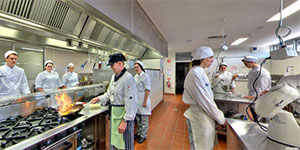Owning a restaurant will require you to stay up to date with a multitude of local fire and health codes. It can get very confusing keeping up with everything and often this leads to corners being cut just so you can have some free time. One area that can get forgotten about is the system of ventilation in your restaurant and the different components that make it up. Here we will describe the 3 elements commercial ventilation consists of.

1. Hoods
The hood is the piece that serves as the entrance to your ventilation. Hoods should be placed over any cooking equipment in order to suck up any hot air, grease or other vapors out of your kitchen to be brought outside. There are guidelines to how big a hood you will need to be that differ by location but a good rule of thumb is to make sure your hood is 6 inches longer on all sides of your equipment.
2. Fans
Exhaust fans are required in order to power the airflow of your ventilation. Bigger restaurants will need bigger fans to provide an adequate flow of air. Fans can also be strategically placed in order to keep any disgusting odors away from your dining area.
In some situations a make-up air fan will be necessary to pump fresh air back into the kitchen to replace the air that is being taken out.
3. Fire-suppression system
Most cities and towns mandate that a fire-suppression system be connected to your ventilation as well. The system is put in place to prevent a kitchen fire from growing and becoming even more dangerous. It is activated by high temperatures or can be manually turned on to spray a liquid agent that will put out a fire quickly.
We hope that this quick rundown of commercial ventilation components helped clear up any confusion regarding your restaurant’s system. All the different parts need regular maintenance to keep the system operating correctly and your restaurant safe.
 CS Ventilation | Commercial Kitchen Hood Cleaning
CS Ventilation | Commercial Kitchen Hood Cleaning